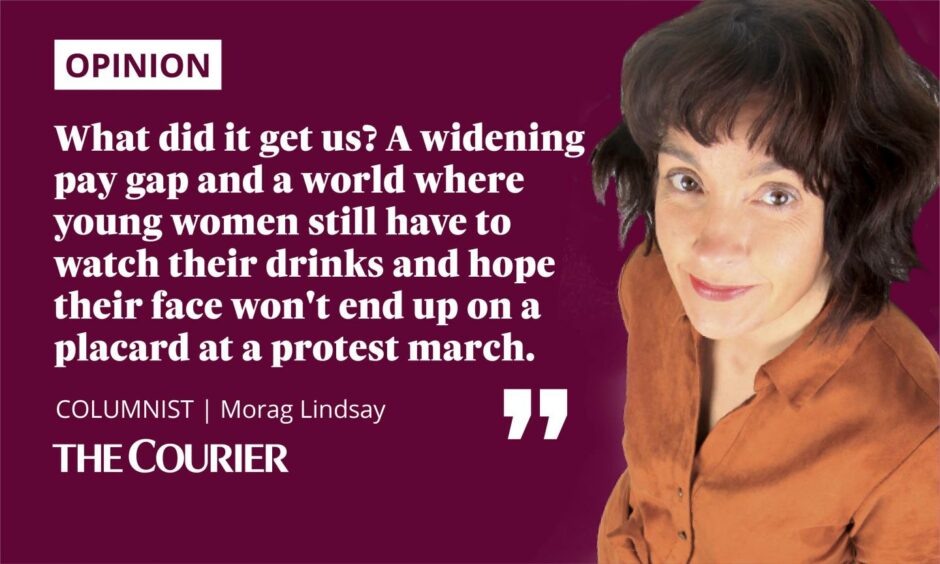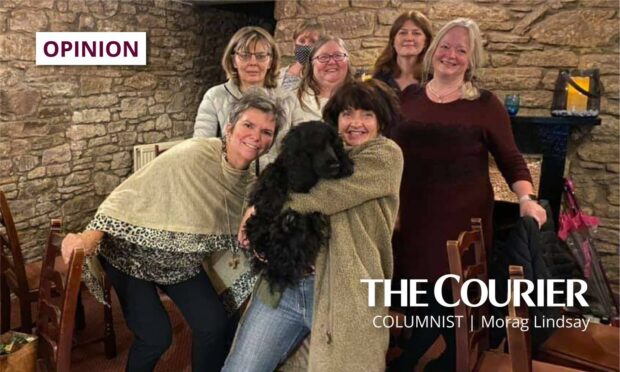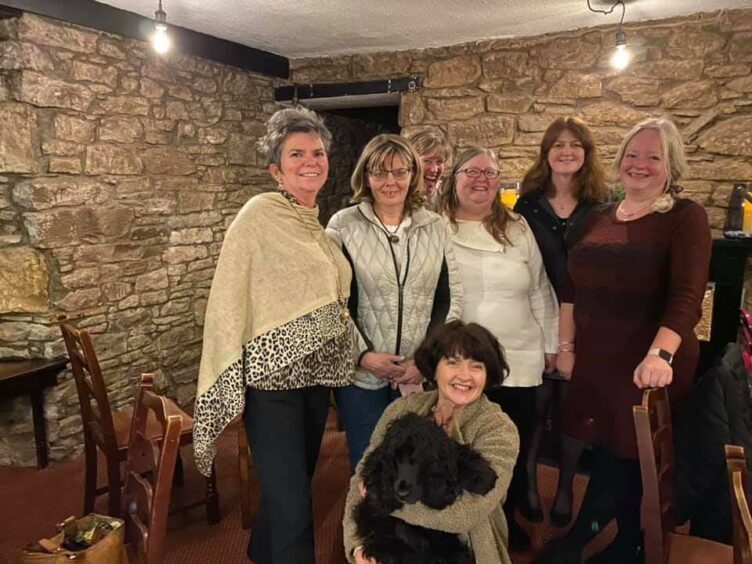I was out with old pals last weekend.
We were at school together. One of them I’ve known since the first day at primary school.
One look at my byline photo will tell you that wasn’t yesterday.
But what a precious thing to have to show for half a century on this Earth.
Someone who knew you long before you started trying to be cool (and who knows there’s no point in persisting with that nonsense now).

Ours is the generation that was promised it all.
And while I wouldn’t go that far, we’ve done okay.
We’ve built careers, graduated from university, bought our homes.
Four of the seven have no kids. And while we have regrets, that’s not among them.
Once we shuffled awkwardly to Depeche Mode and Altered Images on the snakebite-sticky floor of the Coll Earn House Hotel function room.
Now we drink too much wine and belly laugh about hormones and early retirement in a side room at the village pub.
Would I change things that happened in the intervening years?
Probably.
Would I want to go back and be that age again?
Yes. Sometimes I would. Damn right. Those Coll Earn discos were great.
Would I want to be a young woman today?
Not on your nelly.
Have you watched a make-up tutorial on Tik Tok recently?
The sculpting. The implements. The eyebrows.
And that’s before we get to the impact of all the other social media on young women’s mental health.
Drink spiking and a culture of violence
Their real world has looked quite bleak this week too.
The news has been awash with reports of spiking by injection. Young women waking up with no memory of nights-out and puncture marks on their skin.
The Captain’s Cabin in Dundee said it was investigating after posts on social media suggested a young woman had been assaulted there.
Some experts have questioned the inefficiency of the tactic – the difficulty of injecting someone if you’re not an expert, the size of needle needed.
But no one is arguing that there is insufficient data on the subject – or that young women are seriously alarmed.
This has gone viral overnight; the longer the police take to tell us whether needle spiking is actually happening, lots are left fearing they might have been victims – which is seriously traumatic. Hard data couldn’t come quickly enough to explain these. pic.twitter.com/Yy5opmB08u
— Sophia Smith Galer (@sophiasgaler) October 22, 2021
It has also drawn attention to the absolutely real and present danger of drink spiking, which more than doubled between 2015 and 2018, and has led to convictions in the courts in Scotland.
And it’s part of the bigger conversation around violence against women, and women’s place in society, that has become unstoppable since the killings of Sarah Everard and Sabina Nessa.
Standing up to drink spiking – and the rest
I don’t see darkness though.
I see anger and hope.
Mine is the generation that never quite shook off the meekness, however many ‘having it all’ headlines we were sold by Cosmopolitan.
We’re the ones who laughed off the catcalls and carried our keys between our knuckles anyway.
We warned each other about gropers and thought we were holding our own in a man’s world by giving as good as we got.
And what did it get us? A widening pay gap – where women get paid 87p for every £1 paid to men – and a world where young women still have to watch their drinks and hope their face won’t end up on a placard at a protest march.
But theirs is the generation that’s out there organising demonstrations and refusing to know their place.
Women who say they’ve been spiked are demanding police take their claims seriously.
They’re using social media to launch a Girl’s Night In campaign calling for a boycott of nightclubs until safety measures to protect against drink spiking are introduced.
A petition started by a 24 year-old Scotswoman calling for compulsory searches at nightclubs has been signed by more than 140,000 people and might now be debated in parliament.
St Andrews University announced a zero-tolerance approach to drink spiking this week.
Meanwhile Dundee venue Afrobeats has introduced a metal detector and is offering cling film for customers to cover their drinks at the bar.
Change is happening in wider ways
Bigger barriers are being broken down too.
There’s a sense that something shifted with the murder of Sarah Everard.
The protests against violence against women have become larger, more high profile and sustained. Women are not piping down this time.
And men might actually be listening.
Police Scotland has been widely praised for its Don’t Be That Guy campaign, which challenges them to reappraise their attitudes to male sexual entitlement.
Most guys don’t look in the mirror & see a problem. But it’s staring us in the face. Sexual violence begins long before you think it does. #DontBeThatGuy pic.twitter.com/78B05S5lRk
— Don't be That Guy (@ThatGuyScotland) October 13, 2021
The Courier’s own Alistair Heather has been brutally honest about his failings in the past.
It’s a welcome shift away from the usual victim-blaming.
Maybe even a sign that seismic change might actually be under way.
Plenty more fish, now what about women?
There was another story we reported this week that you might have overlooked.
Taylor Waggoner has founded a group called Perth’s Women.
She wants to win more recognition for women in the city where I was born.
On Thursday she explained why, telling my colleague Hannah: “There are more statues of fish in Perth than there are of women.”
It was amazing talking to @tay_culture about her plans for Perth's Women! Check it out:https://t.co/gkz5lPqW50
— Hannah Ballantyne ☕️📰🍂 (@hannahelizabdct) October 21, 2021
In the week we all got so excited about the arrival of the Tay Whale sculpture in Dundee – me included – it’s a line I can’t get out of my head.
Taylor’s had enough though.
And she’s another one who’s doing something about it.
My generation didn’t get it all, but I have a really good feeling about this next lot.

